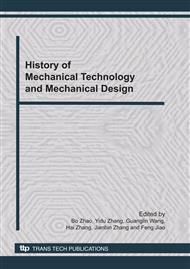p.151
p.156
p.160
p.166
p.170
p.175
p.179
p.183
p.188
Experimental Research on Ultrasonic Assisted Pulse Electrochemical Compound Finishing for Hard and Brittle Metal
Abstract:
The experiment of ultrasonic assisted pulse electrochemical compound finishing is carried in this paper. The machining principle of the compound finishing is discussed in this paper. Processing experiments of compound finishing are carried out to study the effects of the main processing para- meters, including the particle size, the ultrasonic vibration amplitude, the minimum gap between the tool head and workpiece and the pulse voltage, on the material removal rate and the surface quality for hard and brittle metal materials. The curves of the corresponding relationships are also obtained. The study indicates that the processing velocity, machining accuracy and surface quality can be improved under the compound finishing, obtaining the processing technology conductions of the compound finishing. Introductions
Info:
Periodical:
Pages:
170-174
Citation:
Online since:
November 2010
Authors:
Price:
Сopyright:
© 2011 Trans Tech Publications Ltd. All Rights Reserved
Share:
Citation:


